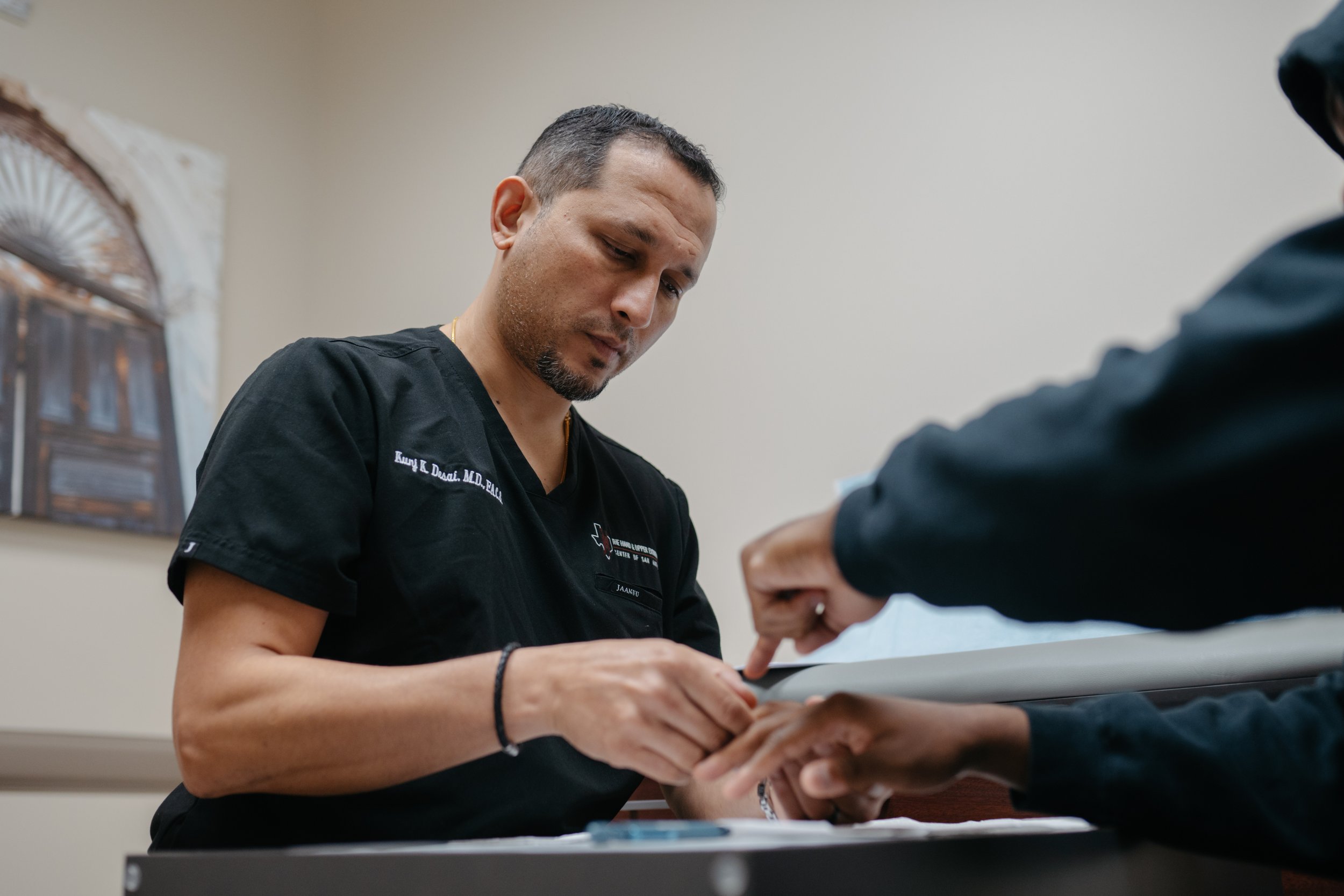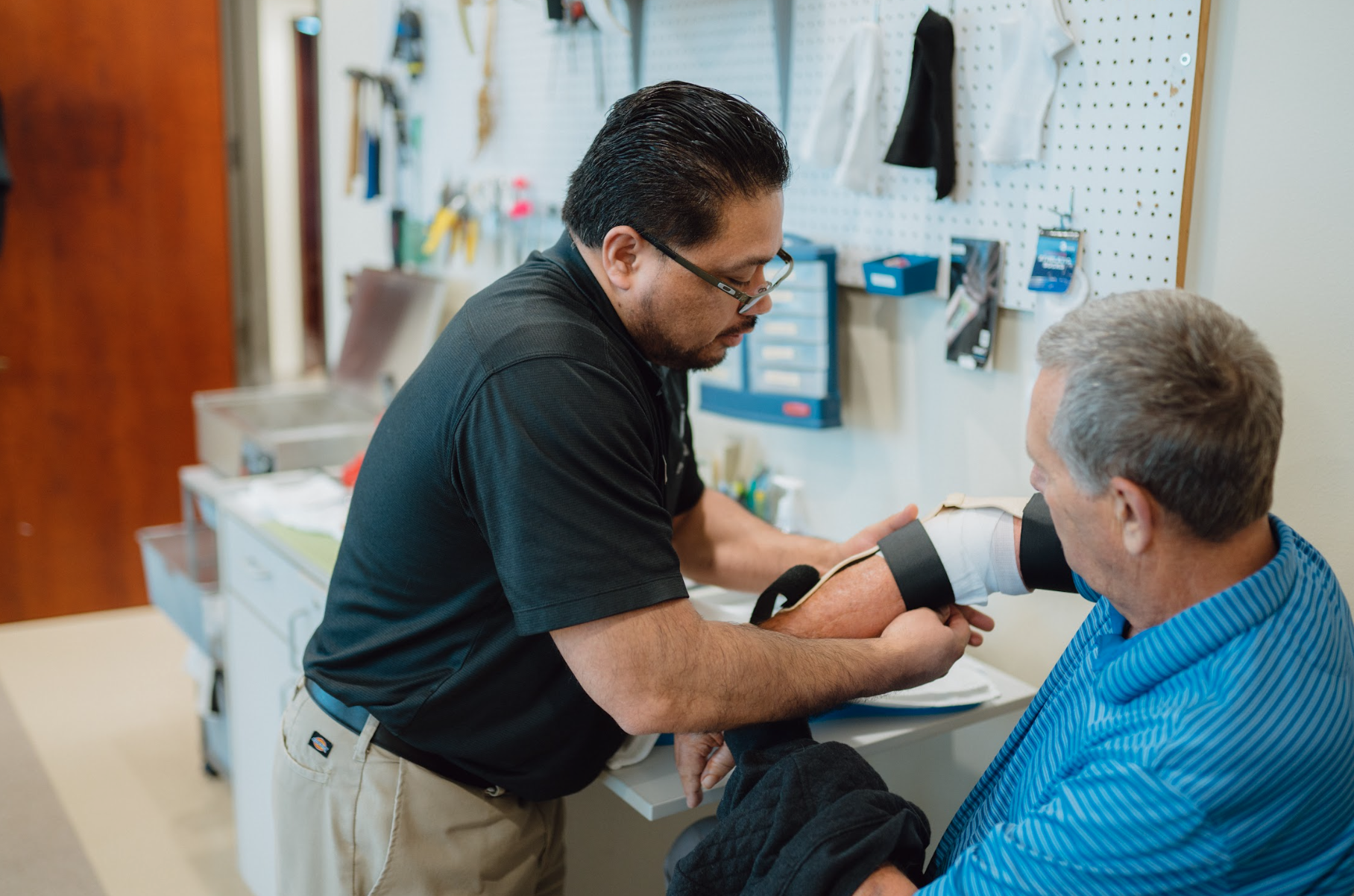
Distal Biceps Tendon Ruptures
What is a Distal Biceps Tendon Rupture?
The distal biceps tendon rupture is an injury affecting the connection between the biceps muscle and the forearm. Located in the upper arm, the biceps plays a key role in elbow flexion (bending the elbow) and forearm supination (turning your palm upwards). The distal biceps tendon acts as a powerful anchor, attaching the muscle to the radius bone in your forearm. When this tendon ruptures, it detaches from its attachment point, potentially causing significant functional limitations.
common treatment options for Distal Biceps Tendon Rupture include:
Non-surgical management: This is often the first line of treatment, especially for partial tears or in less active individuals. It may involve:
Immobilization: Wearing a splint or sling for a short period to allow initial healing and reduce inflammation.
Physical therapy: Exercises to regain strength, flexibility, and range of motion in the elbow joint.
Medication: Anti-inflammatory medications (NSAIDs) to manage pain and swelling.
Surgical repair: This might be recommended for complete tears, particularly for active individuals who require full functionality, or if non-surgical treatment fails to provide adequate improvement. Surgical techniques can involve:
Arthroscopy: Minimally invasive procedure using a small camera and specialized instruments to reattach the tendon to the bone.
Open surgery: Traditional surgical approach with a larger incision for more complex repairs.
Distal biceps tendon ruptures typically occur due to a sudden, forceful exertion against resistance. This can happen during activities that involve heavy lifting, pulling a heavy object, or even reaching to break a fall. The forceful contraction of the biceps muscle against a resisting force can overwhelm the capacity of the tendon, leading to a tear.
Age-Related Degeneration: As we age, tendons naturally lose elasticity and strength. This degeneration process makes the distal biceps tendon more susceptible to tearing under stress.
Prior Biceps Tendon or Elbow Injuries: Previous damage to the biceps tendon or surrounding structures, such as rotator cuff tears or elbow bursitis, can weaken the area and increase the risk of a future distal biceps tendon rupture.
Repetitive Overhead Activities: Jobs or hobbies that involve frequent overhead motions, particularly with heavy weights, can place chronic stress on the biceps tendon, potentially leading to microscopic tears and eventual rupture. This risk is particularly high for professions like construction workers, painters, or athletes involved in throwing sports.
Risk Factors and Contributing Conditions for Distal Biceps Tendon Rupture
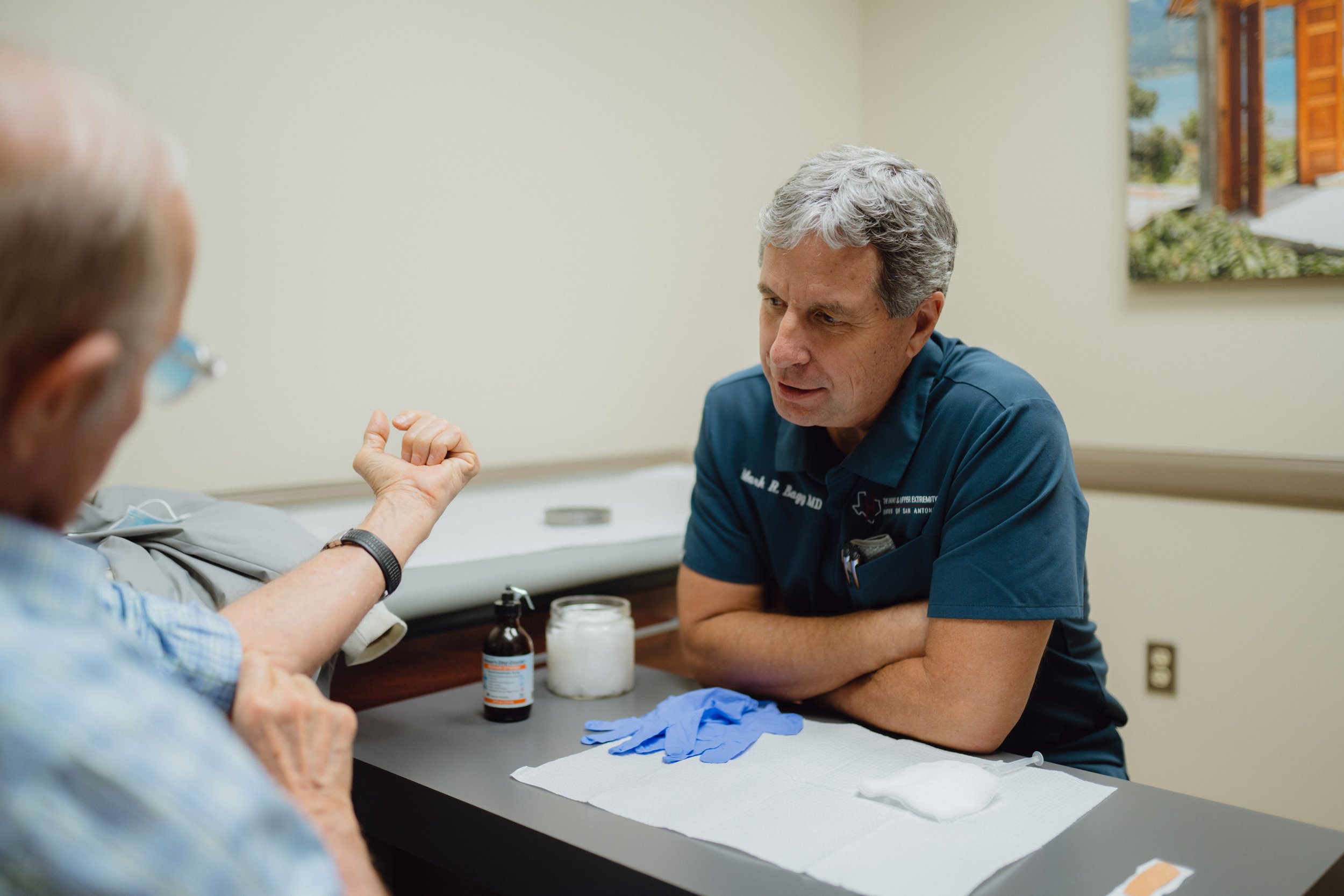

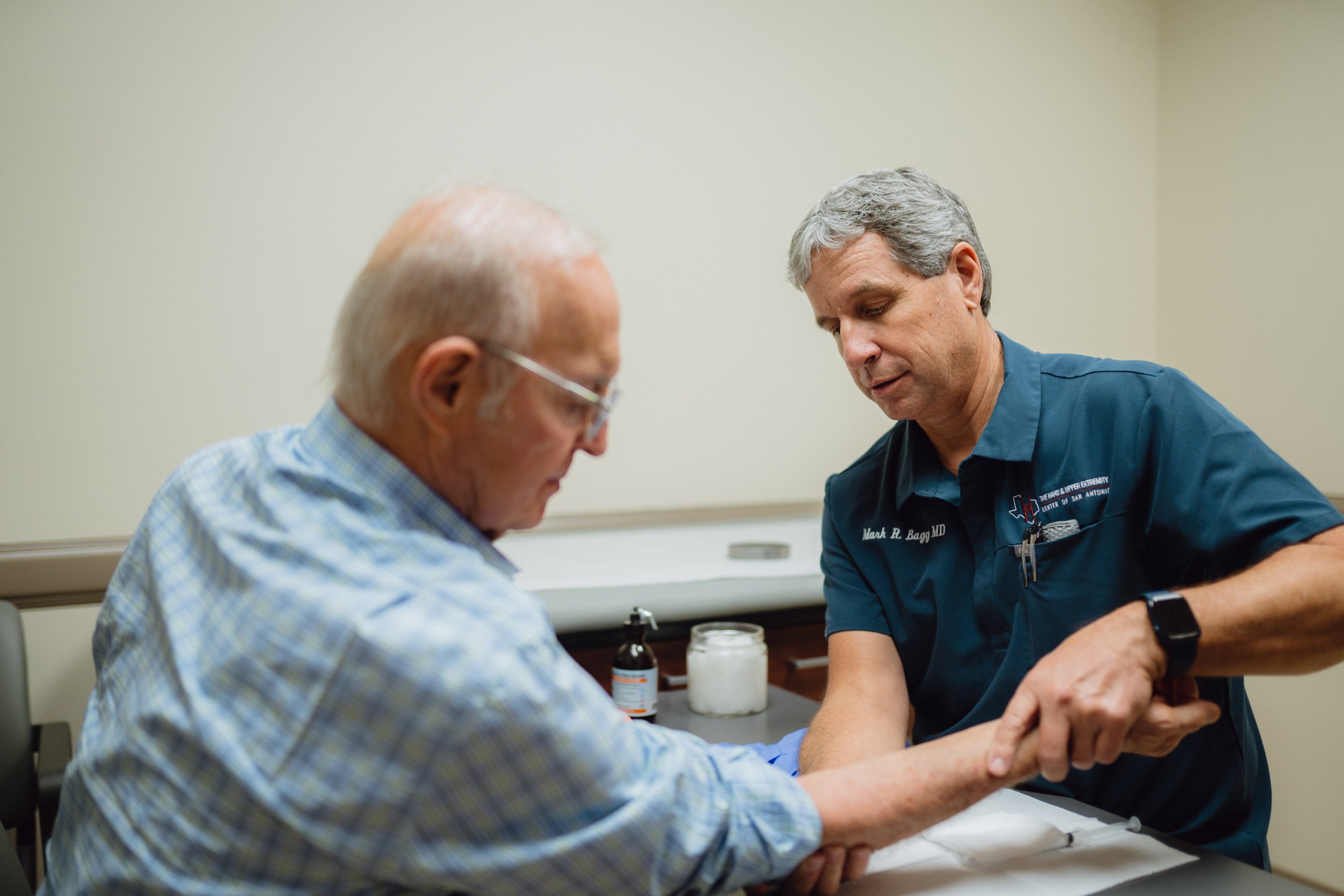
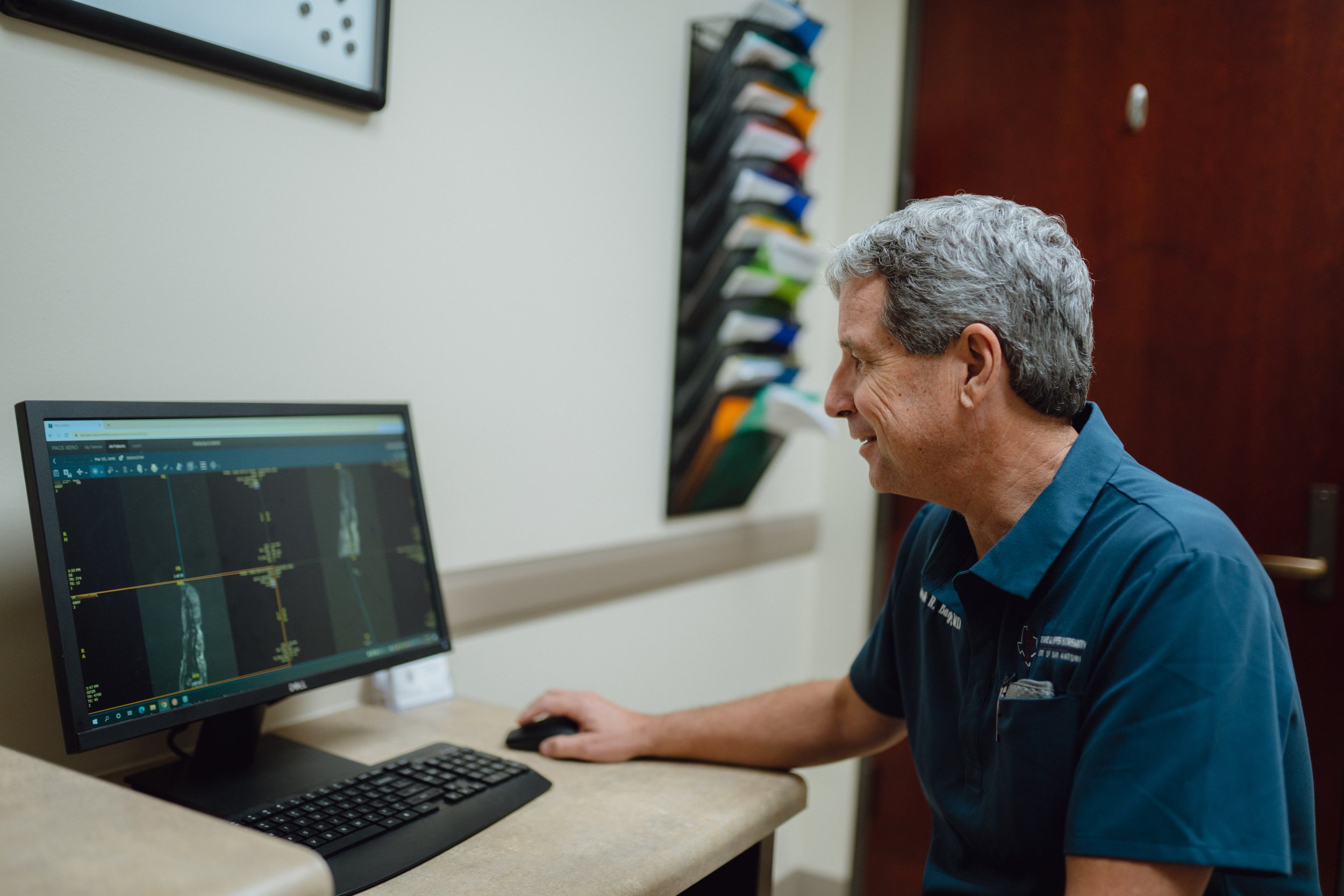
why come to The Hand and Upper Extremity Center of San Antonio for your Distal Biceps Tendon Rupture?
At The Hand Center of San Antonio, we understand the complexities of elbow injuries and are recognized as the leading elbow specialists in the area. Our fellowship-trained doctors possess extensive experience diagnosing and treating all types of elbow conditions, including distal biceps tendon ruptures. We offer a comprehensive approach, from advanced diagnostic techniques to minimally invasive surgical repair, all coupled with a personalized rehabilitation plan to ensure optimal long-term outcomes. If you suspect a distal biceps tendon rupture, don't hesitate to contact The Hand Center of San Antonio. We are committed to helping you achieve a full recovery and get back to living a pain-free and active life.
Meet Our Physicians
-

David P. Green, M.D.
-

Mark Bagg, M.D.
-

David W. Person, M.D., F.A.C.S.
-

Ramesh C. Srinivasan, M.D.
-

Kunj Desai, M.D., F.A.C.S.
Elbow Related Issues we can help with
Elbow Pain
Elbow Dislocations
Elbow Stiffness
Heterotopic Ossification
check out our latest blog posts regarding Elbow injuries
